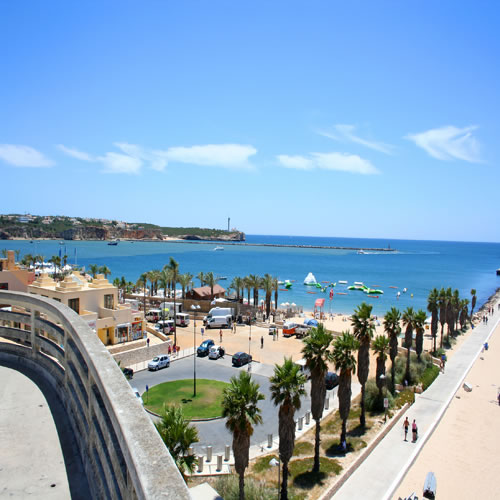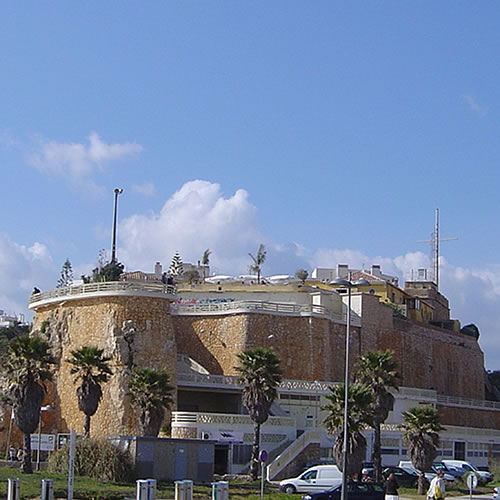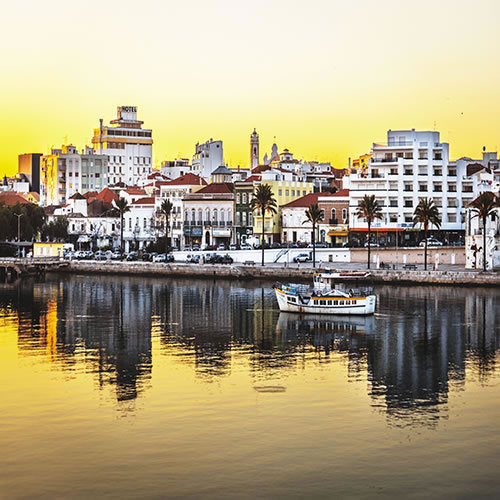PRAIA DA ROCHA - NEIGHBORHOODS


Praia da Rocha
Praia da Rocha was first developed as a resort in 1935, predating similar resorts like Vilamoura by over 30 years. One thing that set Praia da Rocha apart from other Algarve resorts was that it was originally developed for Portuguese families. Especially in the years after the Carnation Revolution, Praia da Rocha was transformed into a tourist destination for people escaping colder climates (like Germany, the United Kingdom, the Republic of Ireland, and Scandinavia). More recently, Praia da Rocha has come highly recommended to travelers who live across the Atlantic.
The beach, resorts, and commercial areas of Praia da Rocha are situated in an area one mile long, stretching from the Arade River Estuary and continuing westward, with the coastline facing the Atlantic Ocean. The main drag in Praia da Rocha is called Avenida Tomas Cabreira, which runs parallel to the boardwalk area just off the beach. Dozens of bars, restaurants, nightclubs, ice cream parlors, souvenir shops, hotels, and other establishments line Avenida Tomas Cabreira and the side streets separating it from Praia da Rocha`s northern boundary, Avenida das Comunidades Lusiadas.
Most of the people who work in Praia da Rocha do not live here; many live in Portimao, a mile and a half away, or in the town of Alvor, three-and-a-half miles away.


Portimao
It can be difficult at times to talk about Praia da Rocha without immediately bringing up Portimao, its large neighbor one-and-a-half miles to the north, but Praia da Rocha would not be the world-class tourist destination it is today without the thousands of people who work in the hotels, bars, and restuarants in Praia da Rocha each day.
Portimao (pop. 45,000) is the second-largest city in the Algarve region of Portugal; only Faro has a larger population. Portimao City is one of the three parishes that make up the larger Portimao Municipality; the other two are Alvor and Mexilhoeira Grande. (Further down this page, there is a description of Alvor.)
Originally named Vila Nova de Portimao, it gained city status in 1924 and the name of the city was changed to simply Portimao. The fortunes of Portimao were once heavily tied to the fishing and canning industries; now, Portimao`s economy is heavily influenced by luxury boating and yachting via the state-of-the-art marina, and beaches like Praia da Rocha which have transformed the area into a tourist mecca.
While Portimao enjoys good weather most of the year, the city tends to be busiest in the summer months, specifically July, August and September.

Alvor, Prainha, and Vau
Just a couple of miles removed from the Atlantic Coast, the parish of Alvor sits on the picturesque Alvor River. Alvor (pop. 6,100) is urbanized, but on a much smaller and slower scale than Praia da Rocha or Portimao. Central Alvor is laid out riverside, a quarter-mile from west to east and also a quarter-mile from north to south.
Alvor is positioned at the southern end of the Alvor River Estuary, which is a Natura 2000-certified ecological and wildlife reserve. The beach closest to Alvor, Praia dos Tres Irmaos (also referred to as the little beach, `Prainha`), is just a short walk away from the ecological reserve.
Between Prainha and Praia da Rocha, there is a small stretch of beach called Praia do Vau. The nearby community of Vau serves tourists who wish to sun themselves on Praia do Vau`s sands. Unlike in Praia da Rocha, this beach offers more accommodations in the vein of condominiums or apartments, and not hotels or resorts.

Parchal and Ferragudo
Ferragudo (pop. 2,000) is a smaller version of Portimao, in that it transformed its economy from being reliant on fishing to becoming reliant on tourism. Nearby Parchal (pop. 4,000), across the Arade River from Portimao, is a classic bedroom community, where many residents have jobs in Portimao and commute there every day for work.